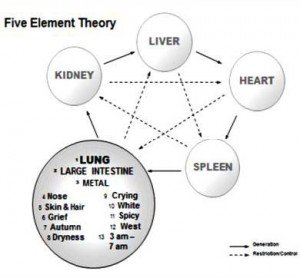“Everything Flows”
By Ellasara Kling
Heraclitus of Ephesus (6th Century BCE)
The cycle of the seasons, the regular rhythmical interchange of one season into another, can almost be ignored due to the technological advances of our modern life. We do not have to notice if it is 98 degrees or 10 degrees, raining or snowing, once we are inside our heated/air conditioned cars, offices, stores, schools, and homes. It’s primarily during the transitions from one place to another that we are aware of “THE WEATHER.” And, it is “the weather” that we mostly relate to as a signifier of the change of seasons. But the temperature, humidity and barometric pressure are not the only signs of the seasons. Other surface signifiers include the state of the foliage, streams, rivers, activities of wildlife (even big cities usually have at least squirrels and birds), the kinds of waves prevalent at the ocean’s shore, to name just a few. 
By observing nature wherever we are and allowing ourselves to feel the flow of each season’s energy, we can know that as Spring comes, life rises, the energy of the world is going outward and upward, blossoming to its height in Late Summer and then beginning its descent in Autumn with the energy of the season beginning to become more inward and flowing downward through to Winter when the seasonal energy is “resting” so that it may rise again in Spring. From this kind of awareness we can read the “messages” of the Seasons. For example, a big message of Autumn/Fall is letting go and accepting that all things are impermanent. One way we can use this message in our lives is loosening our grip on that which no longer serves us and letting it fall away as leaves fall from trees, without struggle but with ease. Trees without leaves may look barren, but they also appear open and ready for something new to adorn them. By following just this one message of Fall, we can allow ourselves new inspiration that can build its strength during restful Winter and sprout in the Spring.
Isn’t there something exceptionally appealing about the air in Fall? On these crisp, clear days, be sure to get lots of fresh air and fill and empty the Lungs completely. Breathe in Life and keep a smile in your heart!
Some Foods That Harmonize With Autumn
Apples, Apricot, Bamboo Shoots, Barley, Basil, **Bai Mu Er – aka White Fungus or Snow Fungus, Cauliflower, Chicken Egg, Chickweed, Cilantro, Coriander, Cow’s Milk, Eggplant, Fennel bulb, Garlic, Ginger, Honey, Job’s Tears (Chinese Barley), Kohlrabi, Kumquat, *Lily Bulb, Loquat, Lotus Root, Lotus seeds, Mustard – leaf and seeds, Onions – Green, Yellow, Red, Shallots, Parsnip, Peanuts, Pears, Peppermint, Persimmon, Pine Nut, Radish, Sauerkraut, Soy milk, Spinach, Strawberry, Turnip, Walnut, Water Chestnut, White yam.
The dryness of autumn can easily cause damage to the digestive system and bring on coughing and a sore throat as well as constipation. Pears, Lily bulb and Snow fungus are three foods each of which are believed to remedy these conditions. Apart from relieving coughing, they can also help nourish the skin and relieve constipation through the promotion of body fluids.
The Lungs connect our “inside” with the “outside” through the nose, its sense organ. As we take in air and qi, The Lung administrates the flow of the qi it receives downward to the other organs. Another function of the Lung from the point of view of Five Element Theory is responsibility for providing proper moisture to the skin and similarly through its paired partner, the Large Intestine. Dry hair and/or skin are considered signs of a “tired Lung”. The Lungs are very sensitive to changes in hot, cold, dryness, dampness, and wind. A situation many of us who work in office buildings face is lack of fresh air and air that is too dry because we breathe “recycled air”. As the weather becomes cooler, the heating systems are cranking up and drying the air even more. It is very important at this time to eat foods that moisten the Lungs/Large Intestine such as pears, honey, snow fungus (available at your local Asian markets), persimmons to name just a few. See, the recipes below for tasty foods that have this effect. To understand more of the relationships of this season, refer to the Five Element Chart below which highlights some of the important relationships of the Lung/Large Intestine season.
RECIPES
Spinach Soup w/Snow Fungus
Ingredients
2 bunches of fresh spinach
½ cup of Snow fungus
2 beaten eggs
1-1/2 qt light vegetable broth or chicken broth
2 thin slices of ginger
1 TB soy sauce
½ tsp salt
1 tsp black pepper
4 oz tofu – cut in ½” cubes
2 TB toasted sesame oil
Directions
Carefully and thoroughly clean the spinach, remove the stems and cut leaves into 2” pieces
Soak the Snow fungus in hot water and rinse a few times. Cut into small pieces
Bring the broth to a simmer; add the snow fungus, soy sauce, ginger, salt and pepper – bring to a boil and then simmer for 10 minutes, add the spinach, stir simmer until spinach begins to wilt
Pour in the eggs slowly in a steady stream stirring the soup gently in one direction only
Add the tofu and heat through.
Serve and sprinkle a little sesame oil on top of each bowl.
Poached Pears: This recipe makes a great dessert but also is said to soothe the throat, ease coughs, regulate digestion.
Ingredients
5 Asian Pears (If they are not available, then use the large pears available to you)
3 Cups water
5 Tb honey
5 Tsp. very finely chopped almonds
5 Tsp. very finely chopped fresh lily bulb
5 Tsp. very finely chopped lotus root
1 Tsp finely chopped ginger
Directions
Bring the water, honey, almonds, lily bulb, ginger and lotus root to a boil (“the mixture”).
Wash the pears well, and cut off the tops at the point where the fruit begins to slope downwards
With a spoon, scoop out the insides to remove the seeds and form a little bowl inside the pear.
Pour the mixture into the pear bowls and cover with the Pear “lids”.
Steam for about 30-40 minutes. Serve warm.
A Fall Congee:
Make rice congee* w/ ginger, lotus seed, and honey topped with cooked or raw diced pear/apple/apricot 
* New to congee? Here is a basic recipe: 1 cup of rice to 9 cups of water. . . Wash the rice so that the water runs clear, add fresh water to a large, heavy bottomed soup pot, bring water w/rice to a boil, reduce heat, cover with the lid slightly tilted to let some steam out and stirring occasionally (to make certain the rice doesn’t stick to the bottom), cook slowly for about 1-1/4 hours until the rice is creamy. You can add more water if necessary or if you want it thinner. You can add almost anything to congee to create the flavor you are looking for. There are innumerable variations, so use your own imagination. It is best to keep the taste light, but it can be very flavorful. Congee is a good way to start the day.
Congee is especially good for the elderly, people who are ill or recovering from illness, or people suffering from loss of appetite,
Lotus Seed Tea for Sleep
Ingredients
10-15 lotus seeds
3 cups of water
Honey
Directions
Place the lotus seeds and water in a pan and simmer until the seeds are completely cooked.
(Depending on your pan, temperature of cooking, you may need more water, add it before the liquid is evaporated and absorbed by the seeds. Always keeping at 1-1/2 cups of water in the pan). When the seeds are cooked simmer for 5 more minutes. Then, pour the tea and add honey to taste.
The natural calming effect of lotus seeds can help create a good night’s sleep.
Walnut Soup
Ingredients
3-4 cups of hot to boiling water
2 cups of walnut halves or quarters
2 cups of cold water
¼ tsp. sea salt
½ cup of sugar
½ cup of pure maple syrup Grade B
4 cups cold water
3 TB cornstarch
Directions
Place 2 cups of walnut halves or quarters in a bowl and cover with very hot to boiling water, cover with lid and let sit overnight
Strain off water and slide skins off of the walnuts
Place them in a blender with 2 cups of cold water and blend for 2-3 minutes
Pour the walnut “milk” in a 3 qt sauce pan with the salt, and sugar, maple syrup and 3-1/2 cups of cold water. Bring to a boil, and reduce to a simmer.
Dissolve the cornstarch in the ½ cup of cold water and add it into the walnut soup, stirring as you pour. Simmer until the soup has thickened to the consistency you want.
Additional ingredients for different tastes: After the soup is made, sprinkle with toasted sesame seeds (white and/or black); chopped almonds, add red dates, your favorite fruit such as chopped pear or apple, goji berries, and so on. Have fun . .. serve as a dessert or for breakfast.
Wishing you good health! Remember to smile from the heart at all things.!
 Ellasara Kling – Following the threads of her personal tapestry, Ms. Kling, a long-time student of Master Nan Lu, weaves her life around the exploration and sharing of self-healing though a variety of modalities, primarily focusing on nutrition, common herbal plants, Qigong Meridian Therapy, and Qigong for Women’s Health. The information in this article is based on the theories and principles of Chinese Medicine. Ellasara has participated in special classes through TCM World Foundation and the Tao of Healing in New York City. For comments, questions, consultations, ellasara00@gmail.com
Ellasara Kling – Following the threads of her personal tapestry, Ms. Kling, a long-time student of Master Nan Lu, weaves her life around the exploration and sharing of self-healing though a variety of modalities, primarily focusing on nutrition, common herbal plants, Qigong Meridian Therapy, and Qigong for Women’s Health. The information in this article is based on the theories and principles of Chinese Medicine. Ellasara has participated in special classes through TCM World Foundation and the Tao of Healing in New York City. For comments, questions, consultations, ellasara00@gmail.com


